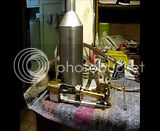Can anyone point me towards a supplier of miniature brass ball valves, please. I need one for the Donkey I'm building, and an internet search doesn't yield anything smaller than 1/4" NPT. I am looking for something which would be used with pipes of no greater than 1/4" outer diameter. A 1/4" NPT pipe is actually .540" outer diameter, and a 1/8" NPT pipe is 0.405" outer diameter, way to huge to use with a 1/4" outer diameter pipe. I have looked on the model steam engine supplier websites, and can't find ball valves there either.---I do not want to use a needle valve for this application.---Brian
You are using an out of date browser. It may not display this or other websites correctly.
You should upgrade or use an alternative browser.
You should upgrade or use an alternative browser.
Miniature brass ball valve
- Thread starter Brian Rupnow
- Start date

Help Support Home Model Engine Machinist Forum:
This site may earn a commission from merchant affiliate
links, including eBay, Amazon, and others.
For the sake of visual comparison, that is a 1/4" NPT ball valve laying on the Donkey, and its comparitively huge. Its as big as one of the cylinders!!!
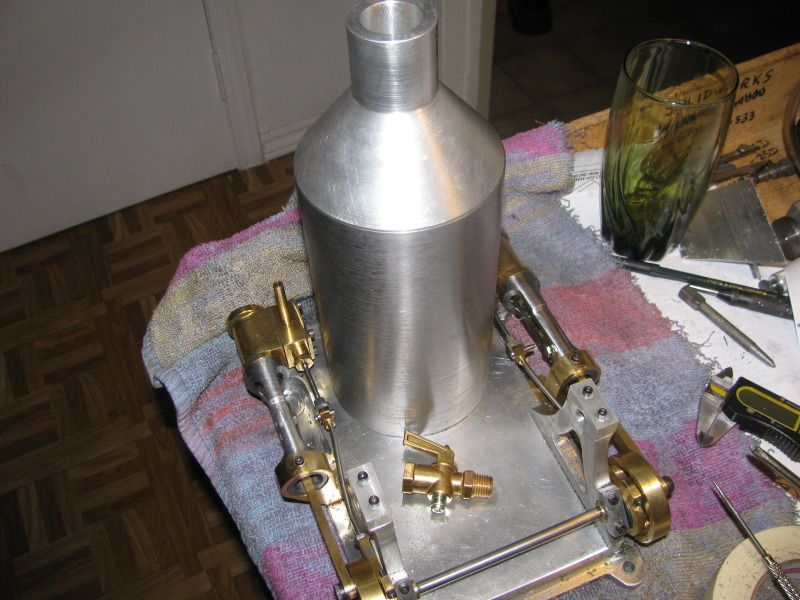

- Joined
- Jul 31, 2010
- Messages
- 306
- Reaction score
- 70
Hi
American Model Engineering Supply has small ball valves. http://www.americanmodeleng.com/id31.html
Tim Meyer
American Model Engineering Supply has small ball valves. http://www.americanmodeleng.com/id31.html
Tim Meyer
- Joined
- Dec 2, 2008
- Messages
- 971
- Reaction score
- 8
Brian
Seem my post
http://www.homemodelenginemachinist.com/index.php?topic=17217.0
on making brass globe valves. They are not that hard to build (the 90° one is easier) and at this size, you will get full flow in about 1/4 turn. I designed them so that the spigot cat be threaded 1/4 (32 or 40 tpi) external or 3/16 internal.
Jerry
Seem my post
http://www.homemodelenginemachinist.com/index.php?topic=17217.0
on making brass globe valves. They are not that hard to build (the 90° one is easier) and at this size, you will get full flow in about 1/4 turn. I designed them so that the spigot cat be threaded 1/4 (32 or 40 tpi) external or 3/16 internal.
Jerry
- Joined
- Mar 26, 2010
- Messages
- 38
- Reaction score
- 1
Just A thought. I've built a steam donkey at 2x scale from the Harris book. 2 inch bore and 2 inch stroke. Running it on air with a 1/4 inch globe valve as you can buy from Coles, I found controlling the speed was a bit fiddly. You might want to consider a finer opening valve than the standard. John
- Joined
- Dec 2, 2008
- Messages
- 971
- Reaction score
- 8
Brian
Here is the AmHoist valve
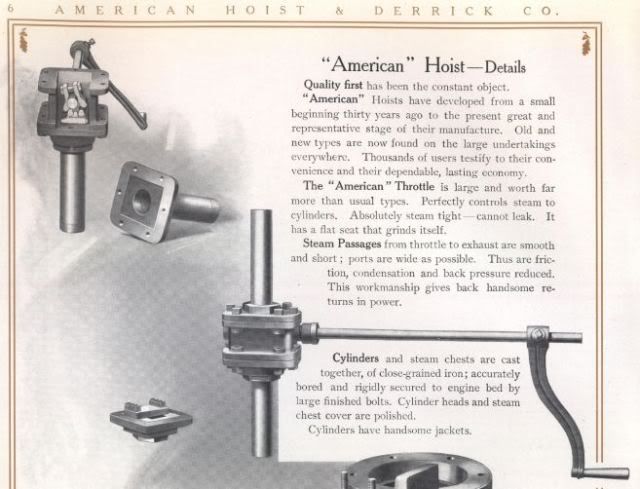
Jerry
Here is the AmHoist valve

Jerry
I've used the PM valves made from a kit as well as Loco Parts ( http://www.locoparts.biz/ ). If you want some really nice valves take a look at SuperScale ( http://www.superscale.biz/Superscale2/Index.html ). I haven't see the valves from these guys yet ( http://livesteamcalibration.ieasysite.com/livesteamcalibration_002.htm ).
For what I am doing, I think I can build a relatively simple leak proof valve. The main valve body can either be loctited or soldered to my main feed line---remember, my engine will run on air at 30 psi max, not steam. This idea was planted yesterday by G Britnell, and it made sense to me. I am going to post a few models and drawings that I done up this morning, and then somebody can explain to me why they think it wouldn't work. if I don't get too many nay-sayers, Iwill detail it and build it.
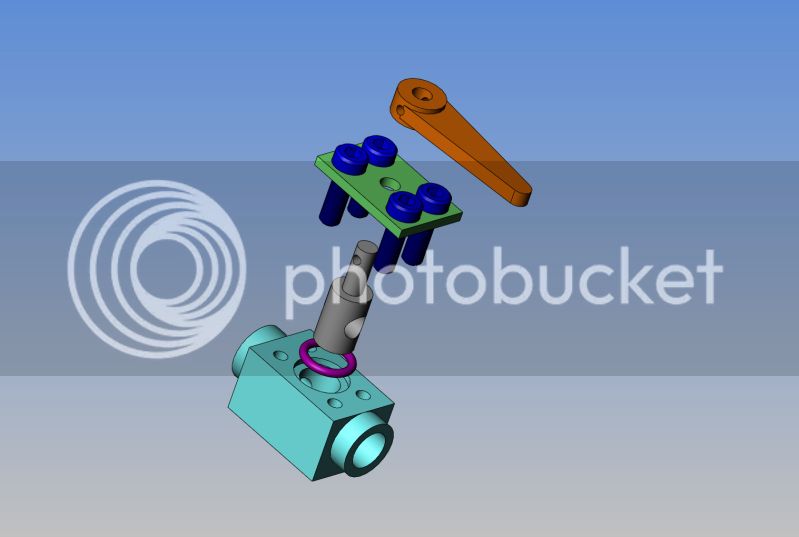
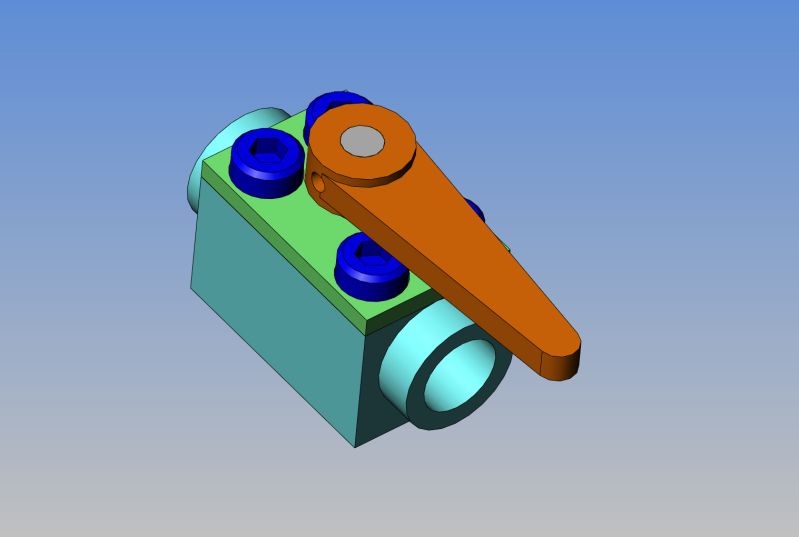


This is a few of the critical dimensions---
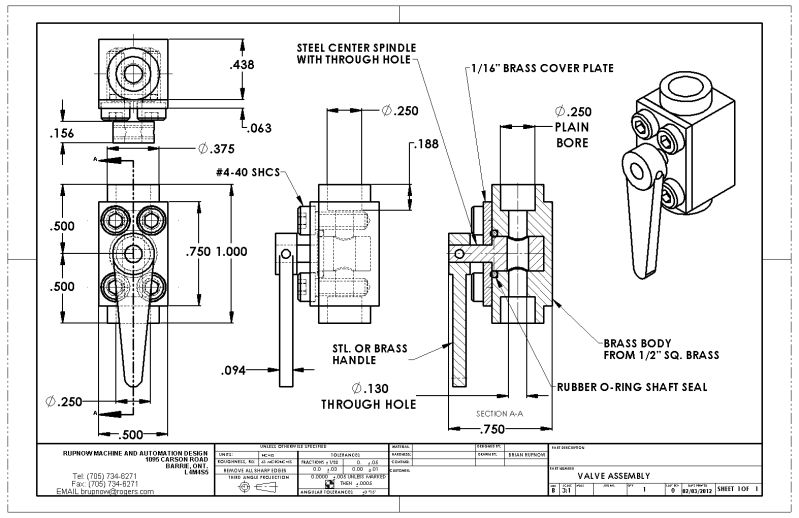

And best of all, look at how the size of it fits with the scale of the Donkey. That pipe I stuck the valve on is a 1/4" O.D. pipe. I know that I will have to rearrange the pipes so that one valve controls both cylinders, but I think the size is almost perfect.
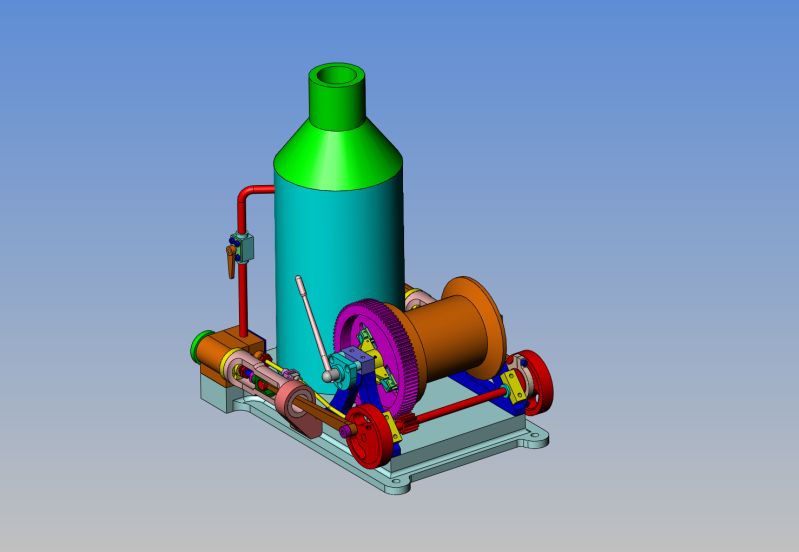

Seems a bit over engineered to me. I have taken another picture of one of teh valves I linked to in the other thread, instead of using teh bolted on front plate just use a screw down gland with a bit a gland packing.
This one is operated by the governor so very low friction and only a few mins to make. The actual body of the main valve is only 3/8x1/2x1/2 so far smaller as well, thats 3/8" pipe for comparrison.
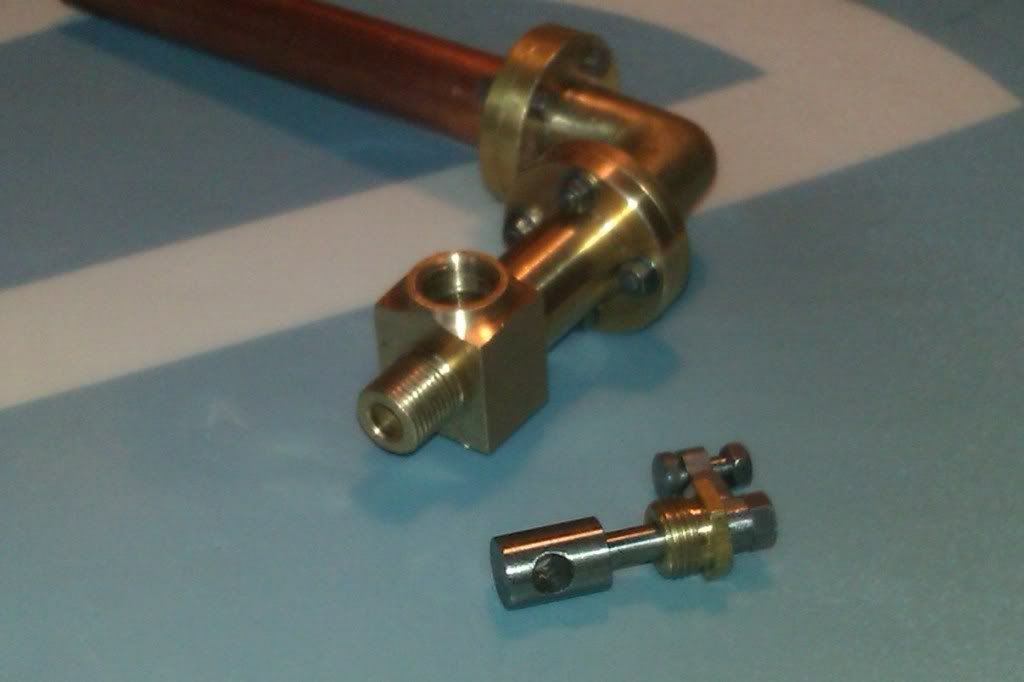
If you do decide you want a shop bought valve then look at the steam stop valves sold for RC steam boats, there is a picture at the bottom of page 49 of this catalogue, even if you decide to make it gives a good Idea of what one looks like with a gland rather than the bolt on plate
This one is operated by the governor so very low friction and only a few mins to make. The actual body of the main valve is only 3/8x1/2x1/2 so far smaller as well, thats 3/8" pipe for comparrison.

If you do decide you want a shop bought valve then look at the steam stop valves sold for RC steam boats, there is a picture at the bottom of page 49 of this catalogue, even if you decide to make it gives a good Idea of what one looks like with a gland rather than the bolt on plate
Thanks Jason. I just come back from buying o-rings. I'm going to give my over engineered one a go and see what happens.---Brian
I'll start by building the main body---
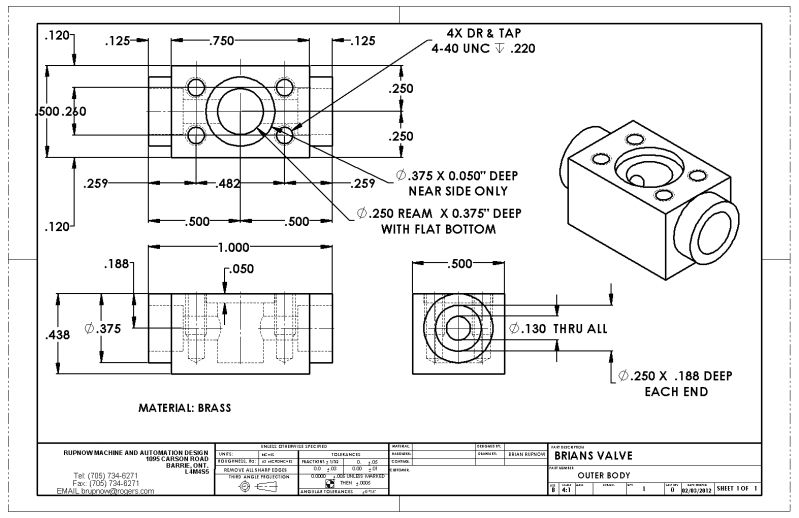

Okay---Valve is done. Now for the cover plate.
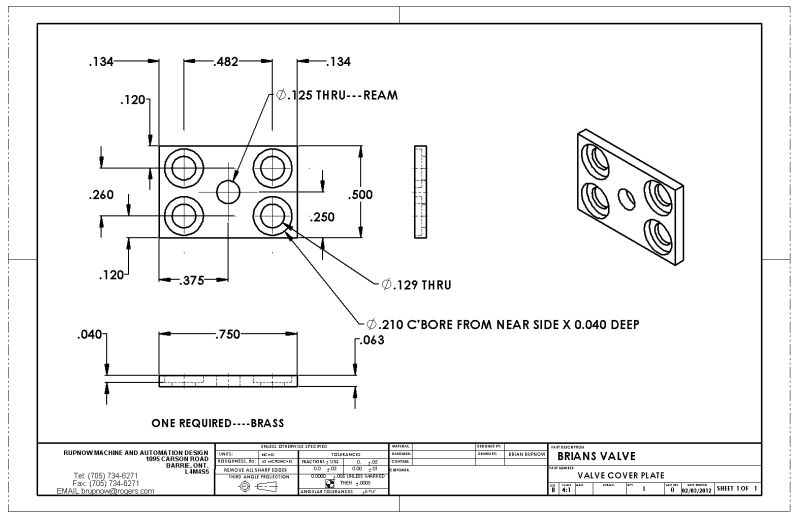

And one of these
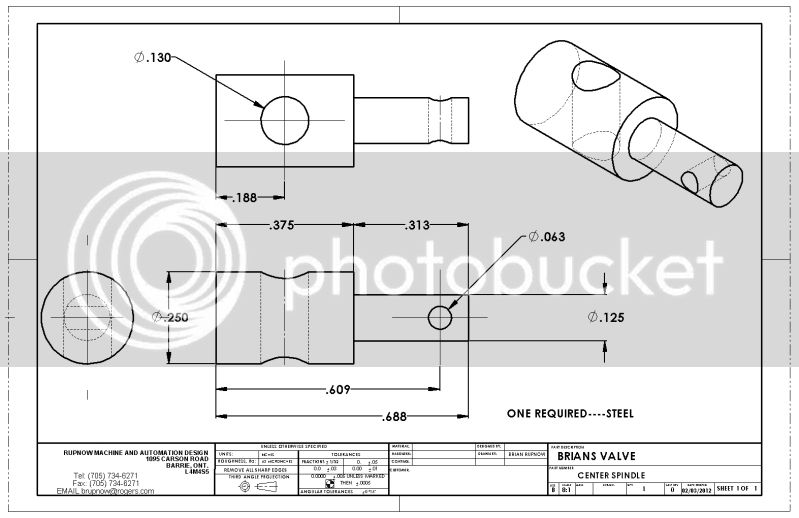

Well, there we are. Airtight as a ducks butt!!! The o-ring may have been a bit of overkill, but it certainly doesn't leak around the valve stem. Doesn't SEEM to leak through the valve either, near as I can tell. I'm going to revise and repost the main body, as I only made the counterbore that the o-ring sets in 0.040" deep. As a consequence, when you squash a 0.62" cross section o-ring into a 0.040 space, it squabs out too much and makes the valve stem stiff to turn. By the way, that o-ring is a number 010 from Hercules o-rings. It is purported to be 1/4" inside diameter x 0.070" in cross section, although when I measured it with my vernier I only read it to be .062" which is exactly 1/16".
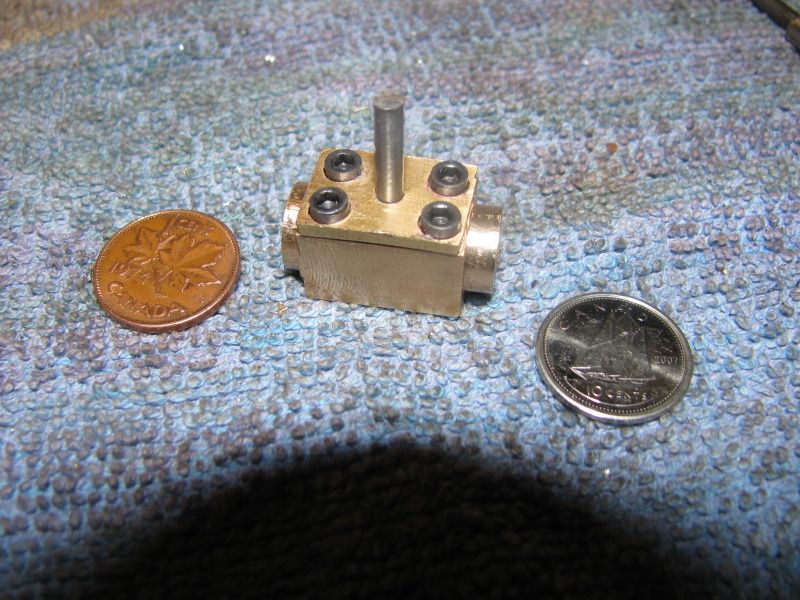

What you are not taking into account Brian is that the slowest you show it running in your video would be the maximum speed the engine should run, any faster and it is grossly over scale.
Almost everyone does it, that is running their 'steam' engines too fast. The slower the better and more in keeping with full size.
You only have to look at full size steam engines running, they are usually fairly slow, except maybe traction engines and such which use fairly large reduction gears to reduce the speed, and thus allow a small cylinder to drive a large machine efficiently.
In all honesty, you would have been better using a metered taper valve, they give much better control than a straight through rotating valve, which are usually used for just turning on/off, not speed control.
You are also wrong in your quote in the video where you state the engine should first run fast, then have to slow it down. The only reason you have to run fast is because there is too much friction in your set up, a free running engine should be able to start of at almost any pressure setting that it will turn at. Maybe you need to give your engines a couple of hours run in on air (never mechanically) before deciding that your control valve is the one to go for. You just might find that when the friction is reduced, your valve will have very little control at all.
I am not being 'picky', just trying to give you a bit of advice based on nearly forty years of running live steam model engines.
John
Almost everyone does it, that is running their 'steam' engines too fast. The slower the better and more in keeping with full size.
You only have to look at full size steam engines running, they are usually fairly slow, except maybe traction engines and such which use fairly large reduction gears to reduce the speed, and thus allow a small cylinder to drive a large machine efficiently.
In all honesty, you would have been better using a metered taper valve, they give much better control than a straight through rotating valve, which are usually used for just turning on/off, not speed control.
You are also wrong in your quote in the video where you state the engine should first run fast, then have to slow it down. The only reason you have to run fast is because there is too much friction in your set up, a free running engine should be able to start of at almost any pressure setting that it will turn at. Maybe you need to give your engines a couple of hours run in on air (never mechanically) before deciding that your control valve is the one to go for. You just might find that when the friction is reduced, your valve will have very little control at all.
I am not being 'picky', just trying to give you a bit of advice based on nearly forty years of running live steam model engines.
John
Similar threads
- Replies
- 57
- Views
- 9K
- Replies
- 4
- Views
- 3K




